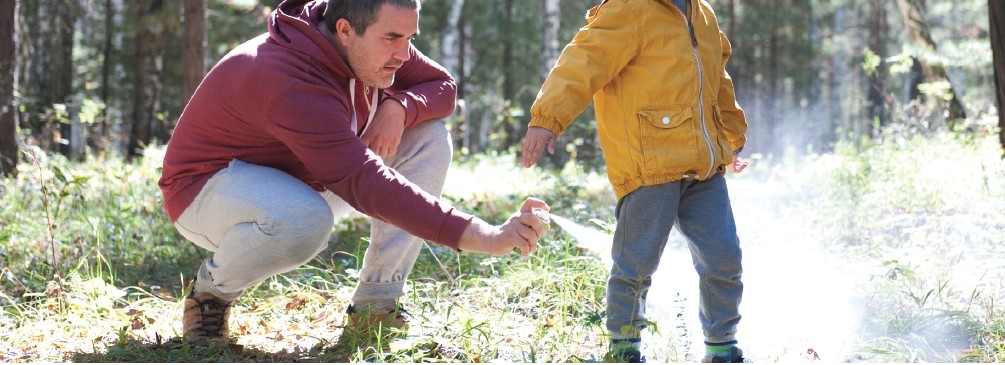Latest News
Fight the Flu – Flu Vaccines Available
Speare Expands Breast Cancer Education During Awareness Month
Remember when you could spend a leisurely summer day outdoors with little concern about ticks? With the tick population on the rise, those are bygone days. And the increase in ticks means a surge in the diseases they transmit.
New Hampshire has one of the highest rates of Lyme disease in the country, which is the most common tick-borne disease in our region. We are in the midst of the peak tick season—May through the end of September— but you can protect yourself now.
Before gardening, camping, hiking, or just playing outdoors, make preventing tick bites part of your plans.

Protect Yourself from Tick Bites
- Tuck shirts into pants and pants into socks
- Wear light-colored clothing
- Wear long pants and shirt sleeves
- Use insect repellent containing DEET
- Conduct daily tick checks
- Remove ticks promptly
Lyme disease is transmitted to humans through a bite by an infected black-legged (deer) tick. A recent sampling in New Hampshire identified that up to 60% of deer ticks carry this bacterium.
Know Where to Expect Ticks
Blacklegged ticks (the ticks that cause Lyme disease) live in moist and humid environments, particularly in and near wooded or grassy areas. You may get a tick on you during outdoor activities around your home or when walking through leaves and bushes. To avoid ticks, walk in the center of trails and avoid walking through tall bushes or other vegetation.
Most humans are infected by tiny nymph ticks, which are difficult to see at sizes less than 2mm. While ticks can attach to any part of the body, you will most often find them in hidden spots like the groin, armpits, and scalp. It usually takes an attached tick 36 to 48 hours or more to transmit the Lyme disease bacterium. If you develop a rash or fever within several weeks of removing a tick, see your doctor.
Lyme disease can be treated rapidly and successfully with antibiotics, especially if treatment begins in the early stages. If not treated, the infection can spread to your joints, heart, and nervous system.
Repel Ticks on Skin and Clothing
Use Environmental Protection Agency (EPA)-registered insect repellents containing DEET, picaridin, IR3535, oil of lemon eucalyptus, para-menthane-diol, or 2-undecanone. EPA’s helpful search tool can help you find the product that best suits your needs. Always follow product instructions. Parents should apply this product to their children, avoiding hands, eyes, and mouth. Use products that contain permethrin on clothing. Treat clothing and gear, such as boots, pants, socks and tents with products containing 0.5% permethrin. It remains protective through several washings. Pre-treated clothing is available and may be protective longer.
- The Environmental Protection Agency (EPA) has an online tool to help you select the repellent that is best for you and your family.
- For detailed information about preventing ticks on pets and in your yard, see Lyme Disease Prevention and Control.
- For detailed information for outdoor workers, see NIOSH Safety and Health Topic: Tick-borne Diseases.
Perform Daily Tick Checks
Check your body for ticks after being outdoors, even in your own yard. Search your entire body for ticks when you return from an area that may have ticks. Use a hand-held or full-length mirror to view all parts of your body and remove any tick you find. Take special care to check these parts of your body and your child’s body for ticks:
- Under the arms
- In and around the ears
- Inside the belly button
- Back of the knees
- In and around all head and body hair
- Between the legs
- Around the waist
Check your clothing and pets for ticks because they may carry ticks into the house. Check clothes and pets carefully and remove any ticks that are found. Place clothes into a dryer on high heat to kill ticks.
Remove Attached Ticks Quickly and Correctly
Remove an attached tick with fine-tipped tweezers as soon as you notice it. If a tick is attached to your skin for less than 24 hours, your chance of getting Lyme disease is extremely small; however, other diseases may be transmitted more quickly. Over the next few weeks, watch for signs or symptoms of Lyme disease.
Know the signs and symptoms of Lyme disease:
- Fever
- Chills
- Headache
- Skin rash (begins up to 30-days after a bite and grows up to 12 inches into a bull’s-eye)
Be Alert for Fever or Rash
Even if you don’t remember being bitten by a tick, an unexpected summer fever or odd rash may be the first signs of Lyme disease, particularly if you’ve been in tick habitat. See your healthcare provider if you have symptoms.
See a healthcare provider if you have signs or symptoms. For more information, see tick removal.
Don’t become a prisoner in your home this summer and take the necessary precautions to stay tick-free and enjoy the beautiful outdoors!

